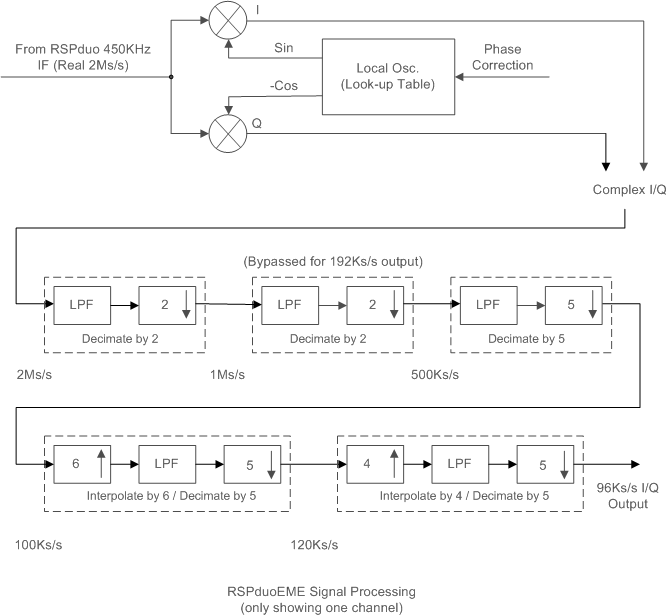
The RSPduoEME application communicates directly with the RSPduo using the SDRplay API / Hardware Driver. It is therefore not necessary to run SDRuno. The application sets the RSPduo operating mode for dual channel and sets the required centre frequency and gain. The data is output to the application at 2M samples per second, per channel, using the Low IF mode. The sampled data is centred at an IF of 450KHZ in a bandwidth of 200KHz.
The application requires the sampled data to be tuned to the centre of the 1MHz pass band provided by the 2M sampled Real data stream, additionally, the Real samples need to be converted to Complex I/Q streams. To perform this operation a software local oscillator is used to tune the signal and convert to two complex I/Q streams by multiplying the input signal streams by Sin and –Cos respectively. The phase of the local oscillator can also be adjusted by software to bring the two input channels into phase.

The Complex I/Q streams at 2Ms/s are reduced to the required sample rate (96Ks/s for MAP65) through a series of decimation and interpolation stages. The 2Ms/s stream requires a rate reduction by a non integer value, so multi-rate conversion using interpolation (increase) and decimation (reduction) is required. The above diagram shows the stages involved. At each stage a digital low pass filter is used to prevent alias and image products.
The resultant 96Ks/s I/Q streams are made available to the Soundcard and network UDP output depending upon the selected output mode. The UDP output is formatted to the Linrad TIMF2 format for input to MAP65.